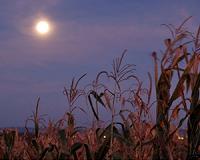 |
Rome, Italy (SPX) Sep 27, 2010 Scientists have discovered a new type of solar wind interaction with airless bodies in our solar system. Magnetized regions called magnetic anomalies, mostly on the far side of the Moon, were found to strongly deflect the solar wind, shielding the Moon's surface. This will help understand the solar wind behavior near the lunar surface and how water may be generated in its upper layer. Observational evidence for these findings will be presented by Dr. Yoshifumi Futaana and Dr. Martin Wieser at the European Planetary Science Congress in Rome, on Friday 24th September. Atmosphere-less bodies interact with the solar wind quite differently than the Earth. Their surfaces are exposed without any shielding by a dense atmosphere or magnetosphere. This causes them to be heavily weathered by meteoroids or the solar wind, forming a very rough and chaotic surface called regolith. Previously, the solar wind was thought to be completely absorbed by the regolith. However, recent explorations of the Earth's moon by the Chang'E-1, Kaguya and Chandrayaan-1 spacecrafts have revealed that this interaction is not that simple. A significant flux of high energy particles was found to originate from the lunar surface, most probably due to the solar wind directly reflected off the Moon's regolith. "These results may change dramatically the way we understood the solar wind-regolith interaction so far," says Dr. Futaana of the Swedish Institute of Space Physics. "Since the solar wind is one potential source of water on the Moon, we need to make better models of the lunar hydrogen circulation in order to understand how water molecules form in its upper layers. Also, it will be possible to remotely investigate the solar wind-surface interaction on other airless bodies, such as Mercury or the Martian moon Phobos, by imaging the energetic hydrogen atoms that are reflected back to space when the solar wind hits their surface," he adds. The current investigation was carried out with the Sub-keV Atom Reflecting Analyzer instrument which was developed in a collaboration between Sweden, India, Switzerland and Japan and flown onboard the Indian Chandrayaan-1 spacecraft. Scientists have mapped for the first time the energetic hydrogen atoms coming from the Moon, and found that up to one fifth of the solar wind protons reaching the lunar surface are reflected back to space. This may be a general feature of the atmosphere-less bodies, such as Mercury, meteorites and several moons of the giant planets. "In fact, during the close encounter of the European Mars Express spacecraft with Phobos in 2008, we detected signatures of reflected solar wind protons also from the surface of the Martian moon Phobos," says Dr. Futaana. However, when Chandrayaan-1 flew over a magnetic anomaly on the lunar surface, the scientists detected significantly less reflected hydrogen atoms, meaning that the solar wind had not reached the lunar surface. In fact, the solar wind was found to be strongly deflected by an aggregation of magnetic anomalies in the southern hemisphere of the lunar far side. "We detected a strong flux of deflected solar wind protons. This clearly indicates that magnetic anomalies can shield the lunar surface from the incoming solar wind, in the same way as the magnetospheres of several planets in our solar system," says Dr. Futaana. "It all depends on how strong the solar wind 'blows'. When the solar wind pressure is low, this 'mini-magnetosphere' expands, causing stronger shielding," adds Dr. Wieser, also of the Swedish Institute of Space Physics.
Share This Article With Planet Earth
Related Links European Planetary Science Congress (EPSC) 2010 Mars News and Information at MarsDaily.com Lunar Dreams and more
 Watch Out For The Super Harvest Moon
Watch Out For The Super Harvest MoonHunstville AL (SPX) Sep 23, 2010 For the first time in almost 20 years, northern autumn is beginning on the night of a full Moon. The coincidence sets the stage for a "Super Harvest Moon" and a must-see sky show to mark the change of seasons. The action begins at sunset on Sept 22nd, the last day of northern summer. As the sun sinks in the west, bringing the season to a close, the full Harvest Moon will rise in the east, ... read more |
|
| The content herein, unless otherwise known to be public domain, are Copyright 1995-2010 - SpaceDaily. AFP and UPI Wire Stories are copyright Agence France-Presse and United Press International. ESA Portal Reports are copyright European Space Agency. All NASA sourced material is public domain. Additional copyrights may apply in whole or part to other bona fide parties. Advertising does not imply endorsement,agreement or approval of any opinions, statements or information provided by SpaceDaily on any Web page published or hosted by SpaceDaily. Privacy Statement |